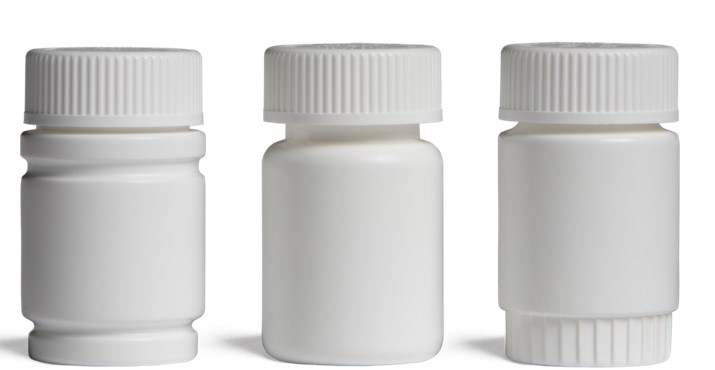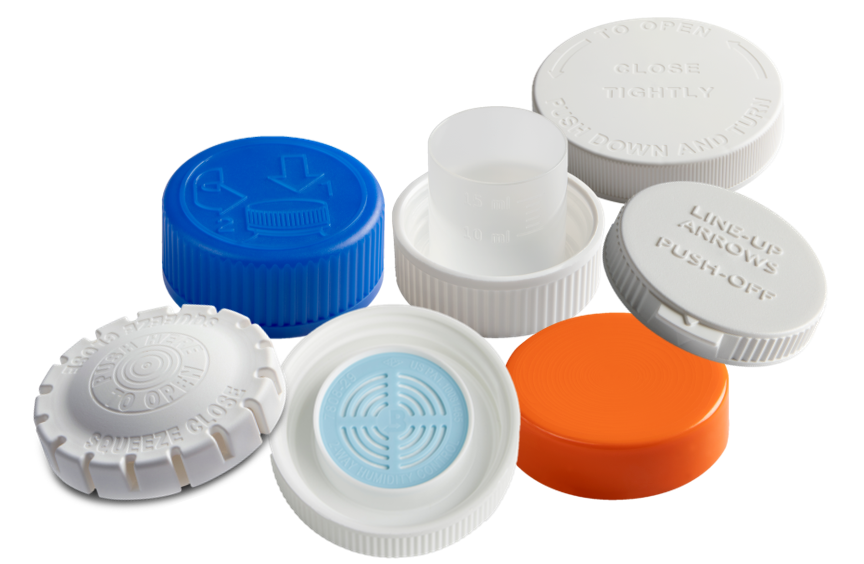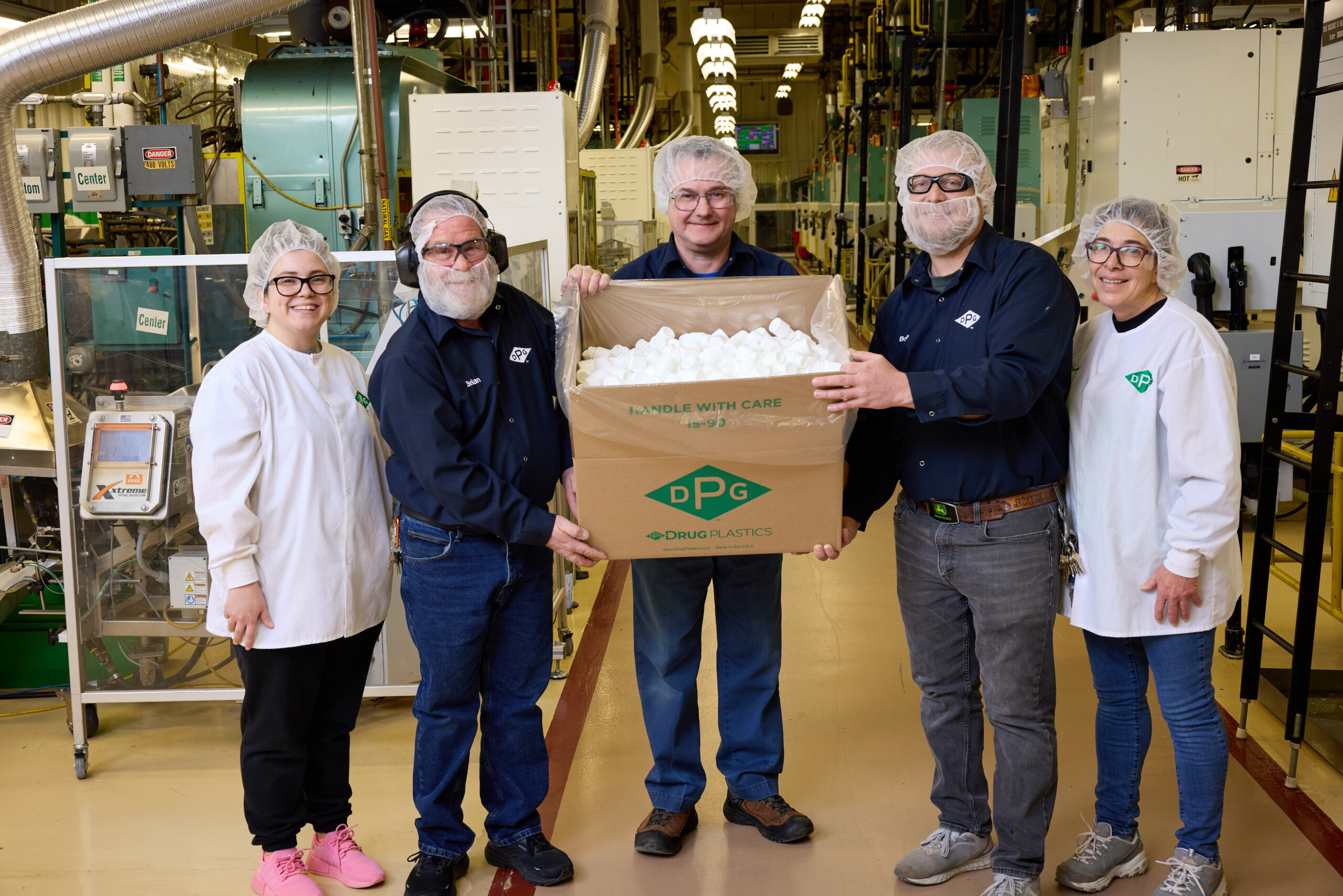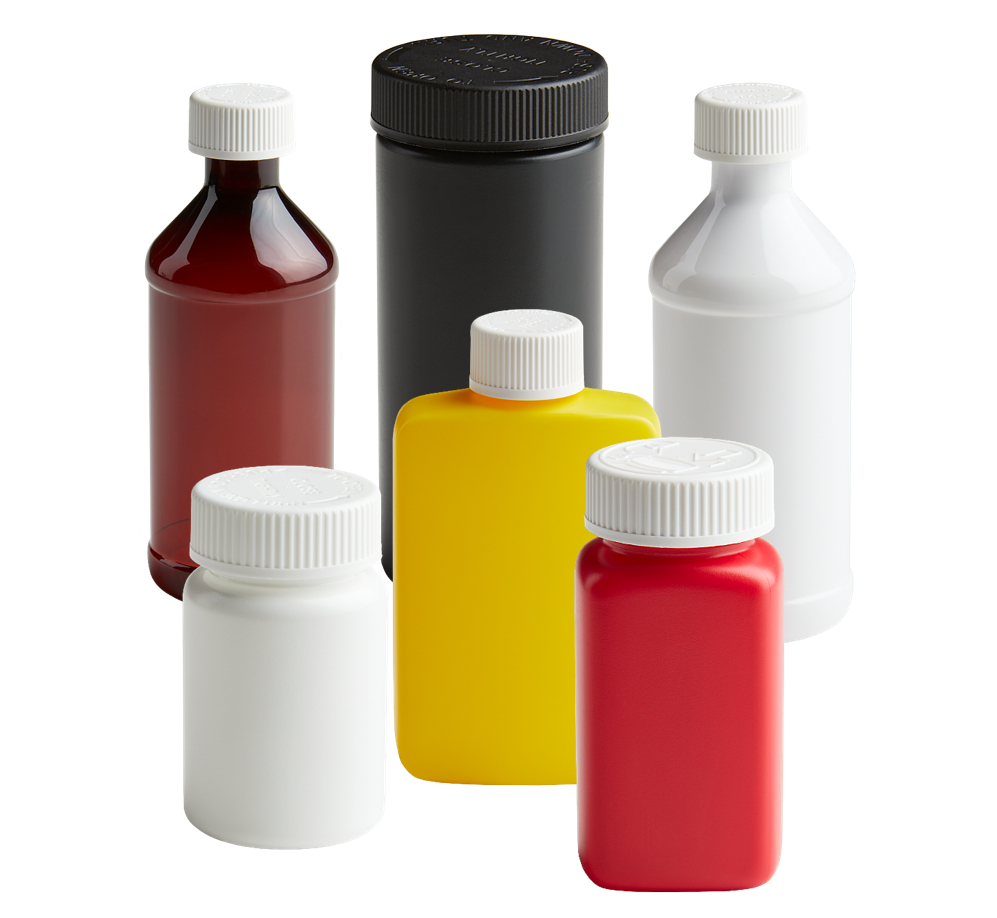A plastic bottle is a plastic bottle, right? Well, not really. The shape of a bottle is an important factor when considering what product is contained inside. There are several ways that the shape of a bottle impacts a product:
- How a product is dispensed
- How a product is displayed on retail shelves
- How a product is labeled
- The way the product’s brand is perceived
Drug Plastics offers a variety of bottle shapes and sizes. Let’s review the key points that are important in selecting the right bottle and closure shape for your product.
Dispensing
The neck of the plastic bottle can affect how well a solid, liquid, powder, or ointment is dispensed. Liquid products pour best when the neck opening of the bottle is 33mm or less. Solids and powders dispense easily when the neck opening is wider, typically 38mm or greater. Because ointments are normally applied with the use of fingers, they need a very wide neck opening of 53mm or more. Ointments dispense better from round jars where there are no corners or shoulders to trap the product and make it difficult to remove. Powders also dispense easier when the bottle has no shoulders.
Space Efficiency
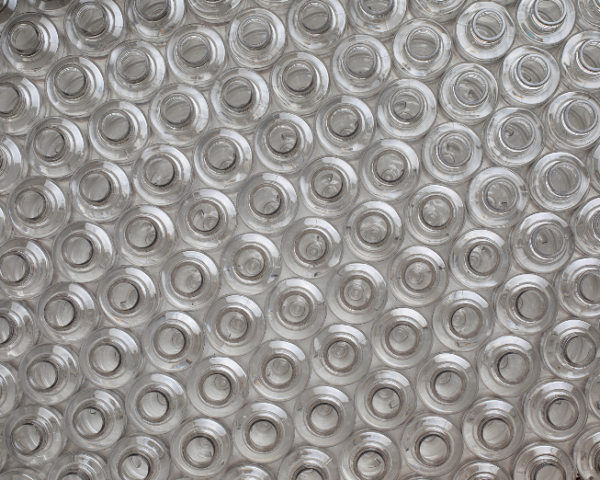 Square and rectangular bottles are more space efficient than jars and bottles that are round, cylindrical, oval, or oblong. When you package or store square or rectangular bottles, there are less air gaps between the bottles. Each side of each bottle more closely touches the bottles next to it. Jars and bottles that are round, cylindrical, oval, and oblong do not completely touch the bottles around them, allowing for open voids of unused space. This means square and rectangular bottles typically help reduce wasted shipping volume, in turn, helping to control shipping costs. Additionally, more efficient use of space means more product fits on the retail shelf.
Square and rectangular bottles are more space efficient than jars and bottles that are round, cylindrical, oval, or oblong. When you package or store square or rectangular bottles, there are less air gaps between the bottles. Each side of each bottle more closely touches the bottles next to it. Jars and bottles that are round, cylindrical, oval, and oblong do not completely touch the bottles around them, allowing for open voids of unused space. This means square and rectangular bottles typically help reduce wasted shipping volume, in turn, helping to control shipping costs. Additionally, more efficient use of space means more product fits on the retail shelf.
Ease of Labeling
Bottles with completely round diameters are the easiest to label because the surface of the bottle is identical all the way around the bottle. This means that jars, as well as round and cylindrical bottles are typically the preferred shapes for labeling. Generally, it is more difficult for labeling equipment to consistently label square, rectangular, oval, and oblong bottles due to the multiple and varying angles on the sides of these bottles.
The size of the bottle also affects labeling. For example, a round bottle may be near impossible to label if it is too small to contain all the required information needed on the label. In some cases, adding a peal-away label with multiple panels to the surface of the bottle or boxing the bottle with an enclosed instruction sheet, compensate for bottles that are too small to label effectively.
Ease of Opening
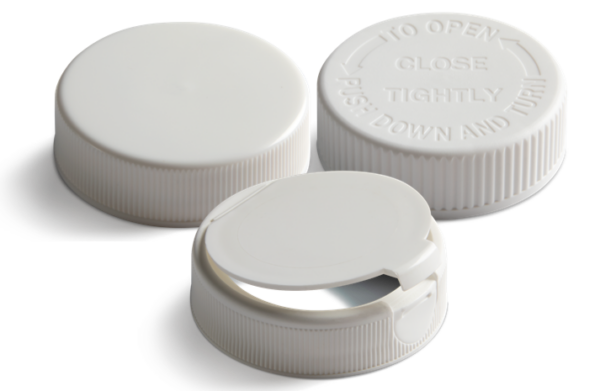 Child Resistant, Continuous Thread, and Dispensing Closures all serve different purposes and are typically chosen depending on the product inside the packaging. However, this is another area where shape and style can have dramatic affect.
Child Resistant, Continuous Thread, and Dispensing Closures all serve different purposes and are typically chosen depending on the product inside the packaging. However, this is another area where shape and style can have dramatic affect.
There are many ways to design a Child Resistant Closure and they can look significantly different – form can vary while still preserving function. The same can be said for Continuous Thread and Dispensing Closures. A good place to differentiate the way your packaging looks is by altering the style of the closure.
However, it is important to be aware of two usability concerns. First, if the redesigned closure is meant to be child resistant, it must pass CPSC testing. Some designs will not pass because they do not meet the child safety criteria, or are difficult for adults to use. While the design may look nice, it may be hard for users, especially seniors and those with limited dexterity, to open the package.
Brand
Many companies use the exact or visually similar bottles and closures as their competitors and non-competitors. Often, the color and the label is all that makes the same bottles and closures look different. Sometimes, even if it is more costly or difficult, the shape of the bottle needs to be something unusual so that there is some other optical cue to make the product stand out in a sea of relative conformity. This is when custom bottle and closure design can add a competitive edge and help a brand shine on the retail shelf where consumers make purchase decisions.
Other Considerations
All plastic bottles are meant to contain and protect the product packaged inside. Every plastic bottle works with some type of closure mechanism to keep the product inside fresh, 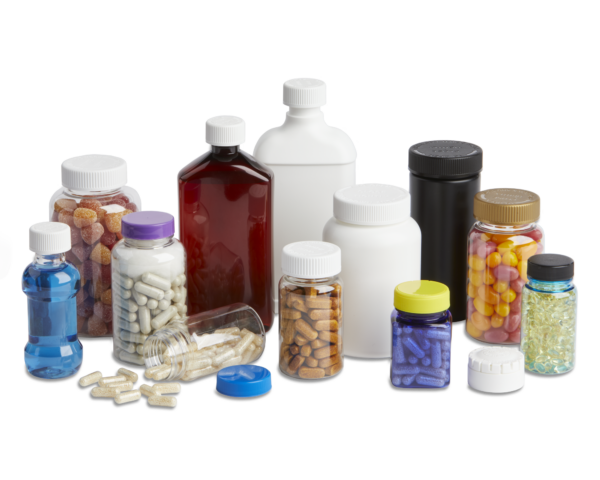 prevent the contents from spilling, and provide varying levels of child resistance. Additionally, different plastic resins and colorants can be used to alter the properties of a bottle. A few examples are:
prevent the contents from spilling, and provide varying levels of child resistance. Additionally, different plastic resins and colorants can be used to alter the properties of a bottle. A few examples are:
- The ability to see the contents through the bottle
- The ability to squeeze the bottle easily
- Protecting the contents from light degradation
- Matching the color of a company or brand
- Providing the best chemical compatibility for the product
Summary
Drug Plastics offers a variety of options for plastic bottles and closures – from different types of resin (like traditional HDPE, LDPE, PET, as well as virgin resins made through Advanced Recycling) – to many colors, shapes and sizes. Our experienced team can assist in determining which plastic bottle and closure is best for your product. However, it often comes down to personal preference. Since shape significantly impacts dispensing, space efficiency, ease of labeling, ease of opening, and brand, it is not a decision that should be made lightly. The real message here is that different bottle and closure shapes do different things better. Knowing what is important to your company brand and your customers will help you make the right decision for your product.
We focus on creating the best packaging solution for our customers’ products and we can do the same for you. Call 610-367-5000 to speak with a knowledgeable representative.
